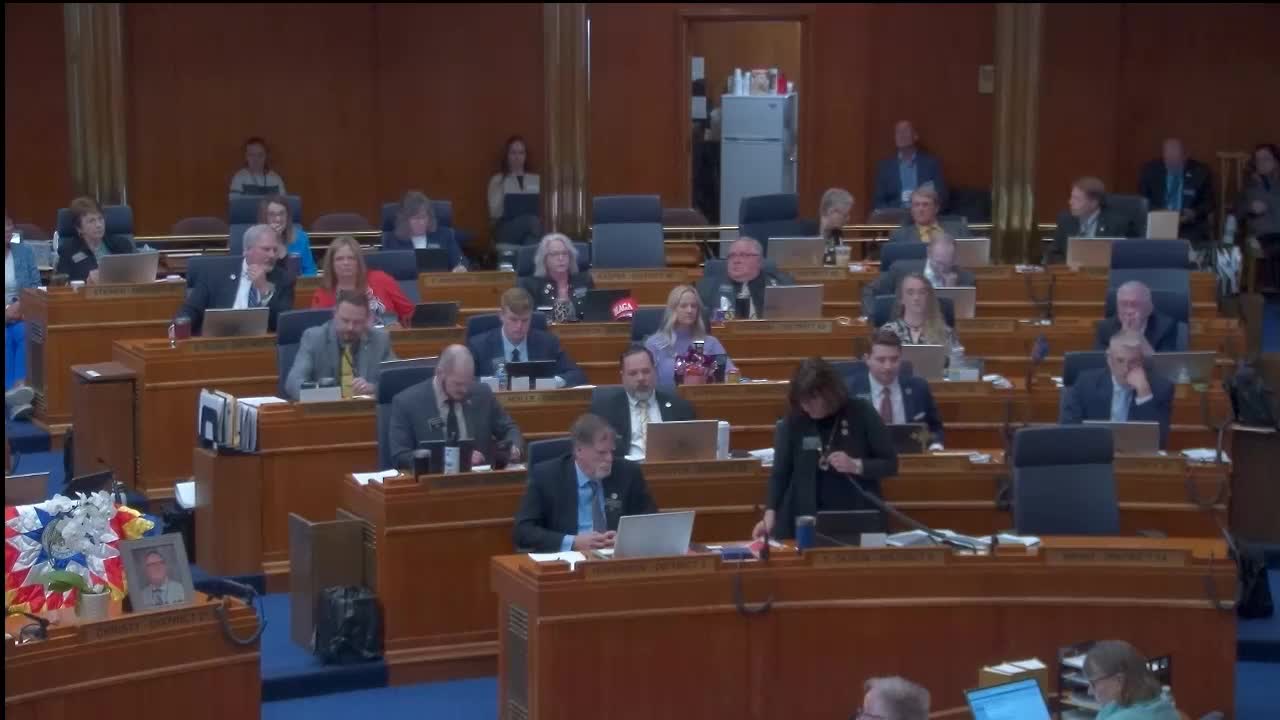House approves new missing‑person alert categories including a ‘feather alert’ for Indigenous adults
May 01, 2025 | House of Representatives, Legislative, North Dakota
This article was created by AI summarizing key points discussed. AI makes mistakes, so for full details and context, please refer to the video of the full meeting. Please report any errors so we can fix them. Report an error »

The North Dakota House of Representatives approved House Bill 15‑35 on a 74‑17 recorded vote, adding two alert categories to the state’s emergency notice system: a missing and endangered persons alert for adults believed to be at imminent risk and a feather alert specifically for Indigenous individuals.
Representative Christiansen presented the conference committee report and described the measure as aligning multiple alert types—amber, blue, silver, missing and endangered, and feather—within a single statutory framework with “substantially consistent procedures.” The conference committee adopted language directing that law enforcement use communications for all alerts but left discretion to agencies on which modes to use.
Floor debate featured concerns about overuse and desensitization: Representative Wolff urged a “red vote,” arguing that each additional alert category increases the risk that the public will ignore future alerts. Wolff said, “It is estimated that every time an alert is sent out, 10,000 people shut off the notifications for future alerts.”
Supporters stressed the disproportionate rates of missing Indigenous people and sought tools to improve cross‑jurisdictional communication. Representative Davis, a sponsor, said the bill was intended to complement recently passed measures and task forces addressing missing and murdered Indigenous people and stressed that the feather alert includes consultation mechanisms with tribal governments through the committee on tribal and state relations.
Representative Wolf noted other states have many alert types and warned repeated alerts can reach hundreds per year; supporters countered that the bill limits when and how the most intrusive notifications are used and that non‑broadcast communication tools (billboards, social media, websites) are part of the overall approach.
The House adopted the conference committee report and then passed the amended bill with the emergency clause. The bill will proceed according to the Legislature’s enactment processes.
Representative Christiansen presented the conference committee report and described the measure as aligning multiple alert types—amber, blue, silver, missing and endangered, and feather—within a single statutory framework with “substantially consistent procedures.” The conference committee adopted language directing that law enforcement use communications for all alerts but left discretion to agencies on which modes to use.
Floor debate featured concerns about overuse and desensitization: Representative Wolff urged a “red vote,” arguing that each additional alert category increases the risk that the public will ignore future alerts. Wolff said, “It is estimated that every time an alert is sent out, 10,000 people shut off the notifications for future alerts.”
Supporters stressed the disproportionate rates of missing Indigenous people and sought tools to improve cross‑jurisdictional communication. Representative Davis, a sponsor, said the bill was intended to complement recently passed measures and task forces addressing missing and murdered Indigenous people and stressed that the feather alert includes consultation mechanisms with tribal governments through the committee on tribal and state relations.
Representative Wolf noted other states have many alert types and warned repeated alerts can reach hundreds per year; supporters countered that the bill limits when and how the most intrusive notifications are used and that non‑broadcast communication tools (billboards, social media, websites) are part of the overall approach.
The House adopted the conference committee report and then passed the amended bill with the emergency clause. The bill will proceed according to the Legislature’s enactment processes.
View full meeting
This article is based on a recent meeting—watch the full video and explore the complete transcript for deeper insights into the discussion.
View full meeting
